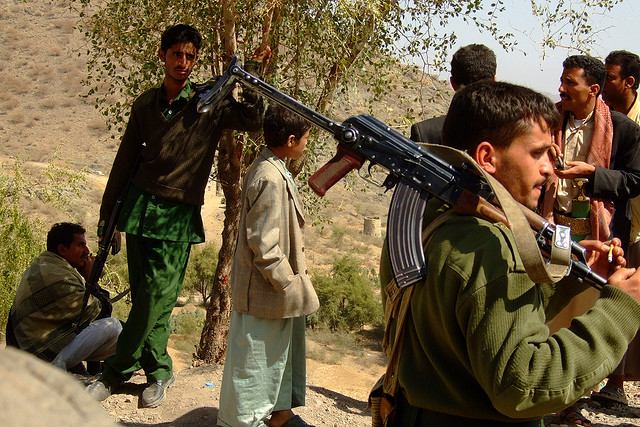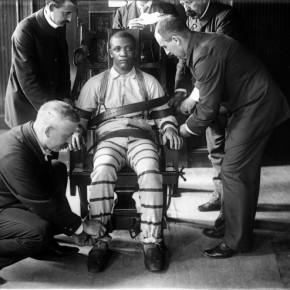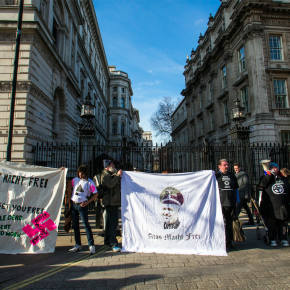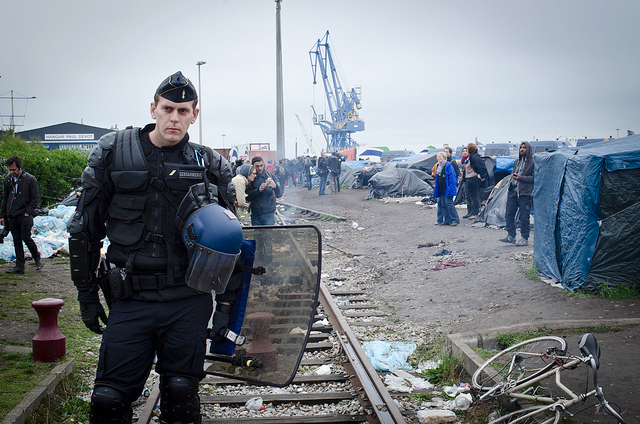The situation in Yemen continues to degenerate faster than the media can analyze it. Since the Houthi seizure of power on Tuesday, there has been a flurry of negotiations, protests, counterattacks, and even outright declarations of independence in the restive south. Many of these events are in keeping with recent events in the country.
Former President Abd-Rabbuh Mansur Hadi was balancing himself precariously against a variety of armed resistance movements. The sudden power vacuum in Sana’a has simply allowed them to mobilize to a much larger degree. Yemen isn’t so much in chaos as it is dealing with a sudden explosion of violence that Hadi barely managed to keep contained. It will be some time before we can make intelligent commentary about the chaos that was unleashed when the Houthis forced his resignation.
“Intelligent” is the keyword. The Houthi offensive has led to shockingly poor analysis about the country from numerous media outlets, including the New York Times, Washington Post, and BBC World. It is critical to examine their claims, and place them under scrutiny. Yemen is frequently analyzed unfairly. There aren’t enough English-language specialists on the country, and larger news organizations tend to focus exclusively on terrorism. It is likely that many readers only even heard about Yemen after the formation of al-Qaida in the Arabian Peninsula in 2009, through a merger of al-Qaida’s Yemeni and Saudi branches. This has meant that during the past five years, media outlets have been allowed to make spurious claims about the country, with few if any repercussions. The Houthis’ alleged Iranian sponsorship, and the scale of the AQAP threat, are perfect case studies.
Although the Houthis seem to be receiving Iranian assistance, its exact scope, and when it even began, is debatable. The Houthis are the armed descendants of a Zaidi Shi’i cultural revival group known as the Believing Youth. The Youth were more concerned with religious activities like the establishment of Shi’i primary schools until the 2004 death of its charismatic leader Hussein Badreddin al-Houthi, at which point the group adopted his name and militarized. This led to a series of wars in Sa’ada that further inflamed tensions in northern Yemen, and produced the seasoned combat veterans that launched Tuesday’s coup. While there is reason to believe that Tehran is involved, the story is clearly one of an Islamic revivalist group gaining influence on the periphery of a Muslim-majority state, and then responding violently when threatened elites seek to confront it.

None of this subtlety is apparent in the Washington Post‘s appraisal of the situation:
“Yemen’s politics are beyond byzantine, but it’s not hard to understand what is happening here: Iran’s clients, who happen to have adopted the same “death to America” slogan as Hezbollah, are imitating the Lebanese Shiite party’s strategy of establishing a chokehold on a weak Sunni government.”
This sentence is baffling. How is the Yemeni government “a weak Sunni government” when Hadi is the former Vice-President of deposed autocrat Ali Abdullah Saleh, who is a Zaidi Shi’i Muslim? Sectarianism can be important, but reading Yemeni politics through such a lens makes very little sense. If Shi’i and Sunni antagonisms were absolute in Yemen, then why would Saleh have mobilized against the Houthis during the Sa’ada Wars, and later pursued ties with Sunni tribal leader Abdullah al-Ahmar? It is also confusing that the Post thinks that broad similarities in the political visions and command structures of the Houthis and Hizb’Allah are irrefutably proven with the phrase “happen to have adopted the same “death to America” slogan.” There is a smart article to be written that compares the two groups, but sharing a Shi’i revolutionary slogan is not evidence of an overlap.
This is nitpicking, and avoids the most important question. Why is a major, and deeply influential, newspaper allowed to dismiss an entire country’s politics as “beyond byzantine,” before launching into an inaccurate reading of the situation? The New York Times goes further, repeating the Post‘s misreading of Yemeni sectarianism when it says that “if the Houthis attempt to govern the majority-Sunni nation, the Qaeda affiliate would almost certainly gain more support.” The Times creates a world where Yemen is neatly divided between these two groups, with no other actors involved. There is no mention of the southern separatists Hirak. There is no discussion about immense tribal federations like Hashid and Bakil. Not to mention the revolutionaries who are still pressing for change. These people are all erased for the sake of a simple portrayal of Yemen as a country of Iranian proxies and Sunni extremists.
The BBC’s Frank Gardner does a little better in writing that “the Sunni tribes, encouraged by al-Qaeda, are busy mobilising to confront the Houthis as they push east,” but reproduces the idea that sectarian divisions are absolute by mentioning them at all. English-language journalists have been slow to learn that just because sectarianism mattered a great deal during the Iraq war, this doesn’t mean that it is important in every political context involving Muslims. Additionally, it is important to note that Gardner says “the Sunni tribes, encouraged by al-Qaeda.” There is a power relationship being implied in this phrase.

Gardner is portraying al-Qaeda as being a monolithic spectre that is quietly manipulating events in Yemen. The reality is far less exciting: there is an al-Qaeda affiliate called AQAP that is operating in respect to other political actors in the country. Gardner’s error is in further propagating a myth of AQAP being far more imposing than it actually is, which the Post‘s Swati Sharma further helps along in a chart that links AQAP to Hirak. The article bases this link on a description of Hirak as “comprised of Sunni rebel groups that has at times been linked to AQAP, though the connection remains unconfirmed.” Once again, sectarian ties are brought up for little to no reason, implying that being a Sunni Yemeni automatically makes someone more sympathetic to AQAP. Besides, if the connection is unconfirmed, then why is it even in the chart?
Hirak’s popularity is based primarily in longstanding grievances about political and economic distribution following a failed unification process with North Yemen. These sentiments have been growing ever since the failure to reestablish South Yemen and Northern military victory in the 1994 civil war. Analysts usually place Hirak’s genesis in 2007, with protests by destitute pensioners that quickly grew into a nationalist backlash. It is now a coalition of various grassroots resistance groups, some of which press for complete independence, and others that are willing to negotiate with Sana’a. AQAP is a completely separate organization, and implying an indirect link isn’t just inaccurate. It’s also extremely dangerous.
There is a reason that the Obama Administration is able to proudly brag about continuing drone strikes despite the Houthis seizing control of Sana’a, and quietly pursue an intelligence-sharing agreement with the group. It faces little backlash for it, mainly because the media landscape has provided American dissenters with few tools to challenge policy decisions that are clearly destabilizing the country. This is exactly the time when Yemen doesn’t need further counterterrorism operations, and yet, the Obama Administration is continuing to parochially focus on AQAP rather than seriously confronting the intense difficulties that Yemenis face. That won’t change until Washington is either embarrassed into another approach, which will not happen as long as the narrative is this poor, or thrown out of the country altogether.
Perhaps that is the most offensive thing about reports on Yemen over the past week. They are deeply unethical, and eliminate the possibility that their audience members can look at the country affectionately, and want serious analysis. We all know that Yemen is complicated, but organizations like the New York Times have more than enough resources to engage with its nuance. The Washington Post can easily access a variety of information about the Houthis. Gardner’s editors at the BBC could have pressed him to describe Yemeni tribes with more subtlety. Sharma didn’t have to include unsubtantiated rumors in a frightening chart of political allegiances. All of these people and organizations have the capacity to produce compelling journalism about the country.
It didn’t happen because none of them seem to care. It isn’t just that Yemen is the poorest country in the Arab world. Yemen’s marginalization is also apparent in how we talk about it. How else can we explain President Obama saying in New Delhi yesterday that Yemen “has never been a perfect democracy or an island of stability”? It is a country that gets pushed to the side, chalked up as a backwards cesspool that is run by tribal interests and rank sectarianism. Journalists don’t seem to think that it deserves studious attention, and politicians that were supposedly backing its transition to democracy are now essentially saying that they weren’t surprised by Houthi militants shelling the presidential compound.
Yemen is exactly the type of country that needs intelligent journalism, and innovative policy, the most. Instead, it is subjected to lazy generalizations, childish refusals to engage with its challenging political landscape, and a continued insistence on using counterterrorist approaches that have been failing for years. Poverty isn’t just about statistics. 25 million people live in a country that the international community doesn’t care about. Except when AQAP exploits that marginalization to train fighters for an attack against cartoonists that actually do matter.
Photographs courtesy of Will De Freitas, brunurb, and Vladimir Tkalcic. Published under a Creative Commons License.






1 comment